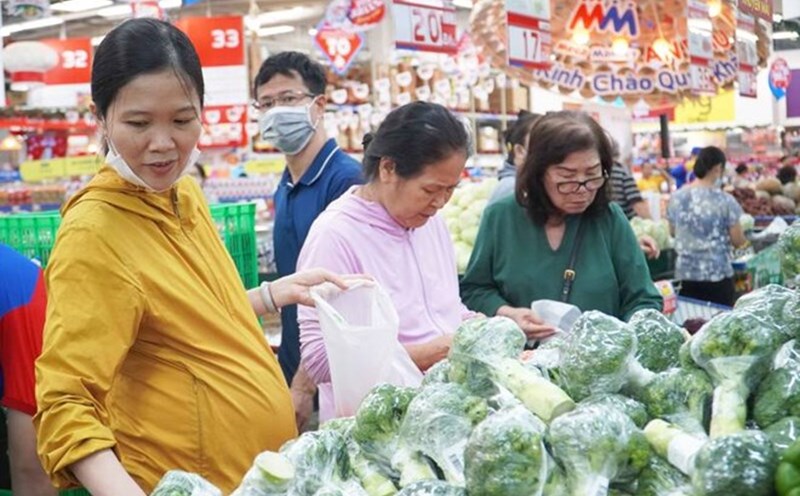Factors creating inflationary pressure
In the context of many complicated developments in the world, the region and the country, Vietnam's inflation in 2024 will be controlled at an appropriate level to support economic growth. Accordingly, the CPI in December 2024 increased by 2.94% over the same period last year. The average consumer price index in 2024 increased by 3.63% compared to 2023.
Thus, inflation in 2024 in Vietnam has been controlled, exceeding the target assigned by the National Assembly at the beginning of the year. This is an inflation rate that is consistent with the socio-economic situation in the country, actively supporting economic growth, contributing to macroeconomic stability, and is a bright spot in Vietnam's economic development results in 2024.
Forecasting and assessing inflationary pressure in 2025, the General Statistics Office said that there are many factors that can create inflationary pressure in 2025. Currently, military conflicts in some countries are escalating, unpredictable, and at risk of spreading. Trade competition between major countries is increasingly fierce.
In addition, extreme weather events have a serious impact on the global economy and society. This can cause disruptions in supply chains, increase transportation costs, affect price fluctuations of strategic commodities in the world, and pose risks to energy and food security.
In particular, President-elect Donald Trump’s tax policies are likely to be harsh, leading to retaliatory responses from countries. Increased trade protectionism and trade barriers will exacerbate trade tensions and disrupt global supply chains, which could trigger a new wave of inflation, while slowing global economic growth and potentially causing unemployment to rise again.
Domestically, the cost of importing raw materials for production may increase according to world prices and be affected by exchange rate fluctuations, affecting costs and product prices, creating pressure on business production and thereby pushing up domestic consumer goods prices and creating pressure on inflation.
In addition, continuing to implement the market roadmap for state-managed services such as electricity prices, tuition fees, and medical service prices in the direction of correctly and fully calculating all factors and costs will have an impact on increasing the consumer price index in 2025.
Stimulus packages, lowering lending interest rates, expanding credit, and boosting public investment help to ease economic difficulties, but can also put pressure on price levels if money supply is not properly controlled.
In addition, as a rule, in the last months of the year and on holidays and Tet, prices of food, beverages, clothing, equipment and household items often increase. During the year, if natural disasters or epidemics occur, it will affect food prices in some localities, and these will also increase the CPI.
Inflation scenario in 2025
According to Dr. Hoang Trung Duc - Faculty of Public Finance, Academy of Finance has two scenarios for Vietnam's inflation in 2025: the baseline scenario and the risk scenario.
"For the baseline scenario, based on existing internal and external factors, the baseline scenario forecasts that Vietnam's inflation in 2025 will be maintained at a controlled level, below 4%, in line with the target set by the Government. This scenario is built on the assumption that the macro economy continues to be stable, there are no major external shocks and management policies are effectively implemented.
In the risk scenario, inflation in Vietnam in 2025 could exceed the target of 4%, causing negative impacts on the macro economy and social life. This scenario occurs when the economy faces major shocks from energy price fluctuations and commodity supply crises," Dr. Hoang Trung Duc assessed.











